Ministry of Fear (1944) and Clash By Night (1952)
By Toronto Film Society on July 12, 2020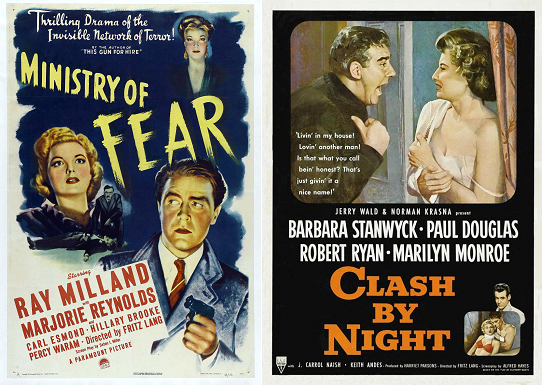
Toronto Film Society presented Ministry of Fear (1944) on Monday, February 2, 1987 in a double bill with Clash By Night (1952) as part of the Season 39 Monday Evening Film Buffs Series “B”, Programme 6.
Ministry of Fear (1944)
Production Company: Paramount. Producer: Seton I. Miller. Director: Fritz Lang. Screenwriter: Seton I. Miller, from the novel by Graham Greene. Art Director: Hans Dreier, Hal Pereira. Cinematographer: Henry Sharp. Music: Victor Young. Editor: Archie Marshek.
Cast: Ray Milland (Stephen Neale), Marjorie Reynolds (Carla Hilfe), Carl Emond (Willi Hilfe), Hillary Brook (Mrs. Bellane), Percy Waram (Prentice), Dan Duryea (Travers), Alan Napier (Dr. Forrester), Erskine Sanford (Mr. Rennit), Thomas Louden (Mr. Newland), Eustace Wyatt (Blind Man), Mary Field (Miss Penteel).
Clash By Night (1952)
Production Company: RKO. Executive Producer: Jerry Wald. Producer: Harriet Parsons. Director: Fritz Lang. Screenwriter: Alfred Hayes, based on the play by Clifford Odets. Art Directors: Alfred S. D’Agostino, Carrol Clark. Cinematographer: Nicholas Musuraca. Special Photographic Effects: Harold Wellman. Music: Roy Webb. Editor: George Amy.
Cast: Barbara Stanwyck (Mae Doyle), Paul Douglas (Jerry D’Amato), Robert Ryan (Earl Pfieffer), Marilyn Monroe (Peggy), J. Carrol Naish (Vince), Keith Andes (Joe Doyle), Silvio Minciotti (Papa D’Amato).
This evening’s films, both directed by Fritz Lang, give us the opportunity to test the validity of the auteur theory. Auteurists argue that, within the collaborative/artistic system, known as the studio, consistent thematic and stylistic concerns can be discovered in the films of certain directors, thus making them primarily responsible for the films on which they worked. Not surprisingly, this theory was greeted with skepticism by some writers and by film artists, such as the screenwriter, who felt that their contribution had been diminished. The critic, Richard Corliss, for example, argues that authorial credit is not so easy to pin down, for sometimes, as in the case of Charles Chaplin, the actor was the auteur, while in other cases, it was the screenwriter or a collaborative duo of screenwriter/director, such as that of Ernst Lubitsch and Samson Raphaelson. Joseph Mankiewicz, on the other hand, argues that the only possible auteur is the screenwriter/director, an artist like himself (naturally).
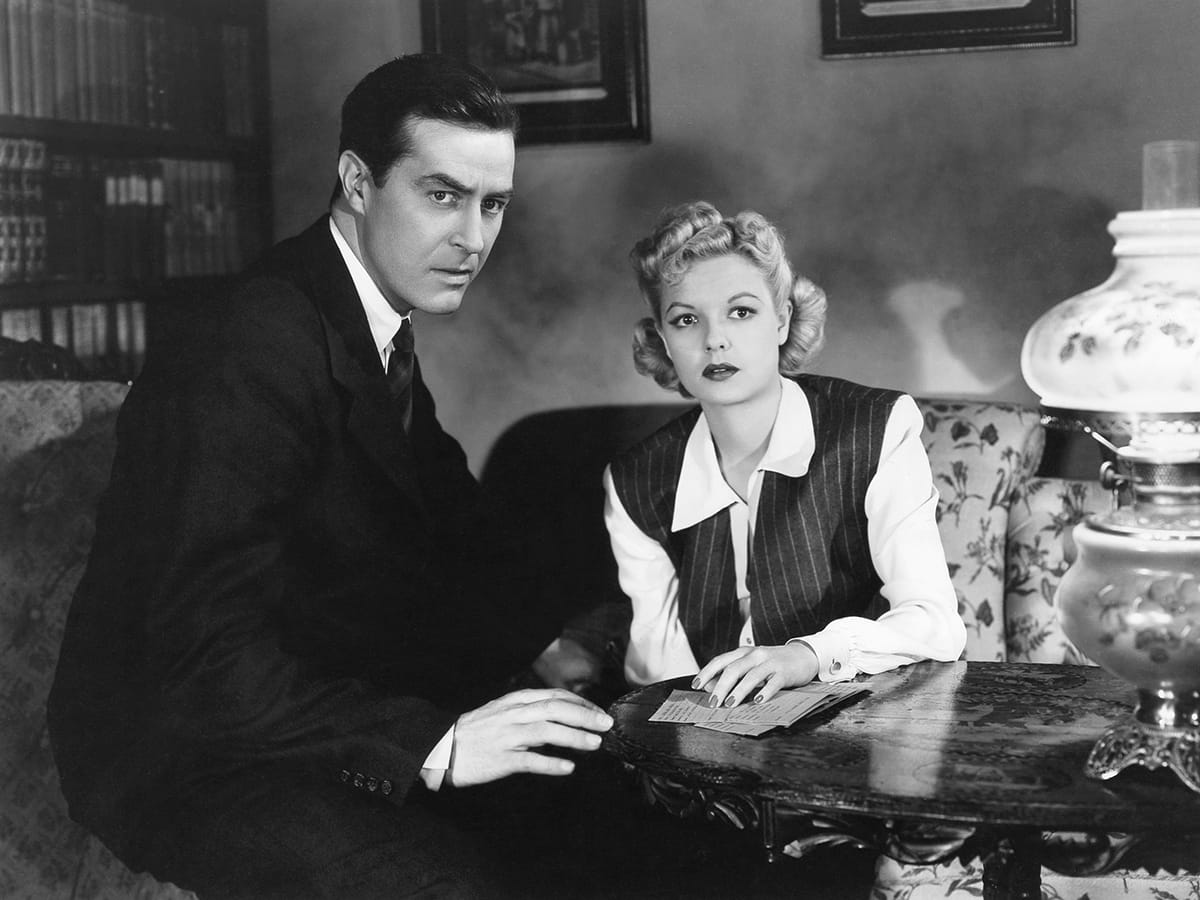
The artistic collaboration on this evening’s films complicates matters even further. Is Ministry of Fear full of “typical Langian concerns, such as the ambiguity of guilt, a breakthrough a moral trap towards a redemptional redefinition of identity, and a realistic nightmare where seemingly secure certainties give way suddenly,” as Lotte Eisner observes? Or are these concerns mutually held by both Fritz Lang and Graham Greene who reflect in their work the anxieties of the age? Greene, who lived in London during the Blitz and who wrote this novel as the bombs fell about him, observing later that “the imminent danger of death made him savour life” all the more, has always been able to set the stage so to speak. His attention to detail evokes in the reader’s mind a concrete image of a landscape which is not merely a backdrop to the action but a form of visual shorthand concretely conveying multiple levels of information which enrich the narrative and involve the reader imaginatively. In like manner, the viewer must read the images in Fritz Lang’s films carefully, for his landscapes are equally rich in meaning. Lang’s training as an architect is evident in the way that he composes his images; shadowy, black spaces conceal an unseen menace, jagged forms press in and down on characters, and the architecture of the spaces surround and entrap tiny vulnerable figures, leaving them no escape. Who, then, is primarily responsible for the images in this film? Are they primarily Greene’s, or Lang’s, or both, or the result of the artistic interaction between the two?
How does the work of art directors Hans Dreier and Hal Pereira fit into the scheme of things? What was the nature of the interaction between Lang and his art directors? Lang’s sketches for his films detailing the set-ups for each scene show a mastery of the interaction of shapes and forms which subtly influence the emotional response of the viewer; however, these sketches are simply outlines meant to serve as a guide and do not even suggest the detailed realization of places such as we see in films. The abstract concept of place which is in the director’s and the screenwriter’s imaginations (sometimes, at least) is transferred into the concrete and detailed images of the film through the work of the art director. In an article on the subject of art direction, David Thomson has the following to say concerning the input of Dreier/Pereira:
If I had to pick a film in which the Langian claustrophobia is especially successful, it would be Ministry of Fear designed by Hans Dreier and Hal Pereira though one suspects Dreier had more to do with it. (The) eerie English fete…and the air raid landscape by the railway line…are beautiful studio mock-ups more chilling than in the open air. Once inside, Ministry of Fear seems all one building with a multiplicity of doorways…It may be a railway carriage door selected by a blind man, a dark door with a star of light where a fatal bullet has passed, or an illuminated doorway in which the brooding policeman finally arrives. In such moments, the harmony of composed vision, somber lighting, and imaginatively-made sets is immensely satisfying.
Clearly, the collaboration between the various artists worked.
Thomson, however, has raised another issue. Where was the cinematographer in this process? He is responsible, in concert with the director, in this case a master at shaping images with light and shadow, and art director, for the lighting. Lang decided to change the locale of the later film Clash By Night, from the east coast to the west coast. To set the atmosphere for the story, Lang and his cinematographer went to Monterey where they shot ten thousand feet of film on the fishing and canning industry there. Lotte Eisner praises the resulting “splendid opening” to the film (which is missing on some prints). With documentary realism, the opening sequence sets the stage, imparting to the film a realism impossible in the theatre. This, then, appears to be another collaborative process that worked.
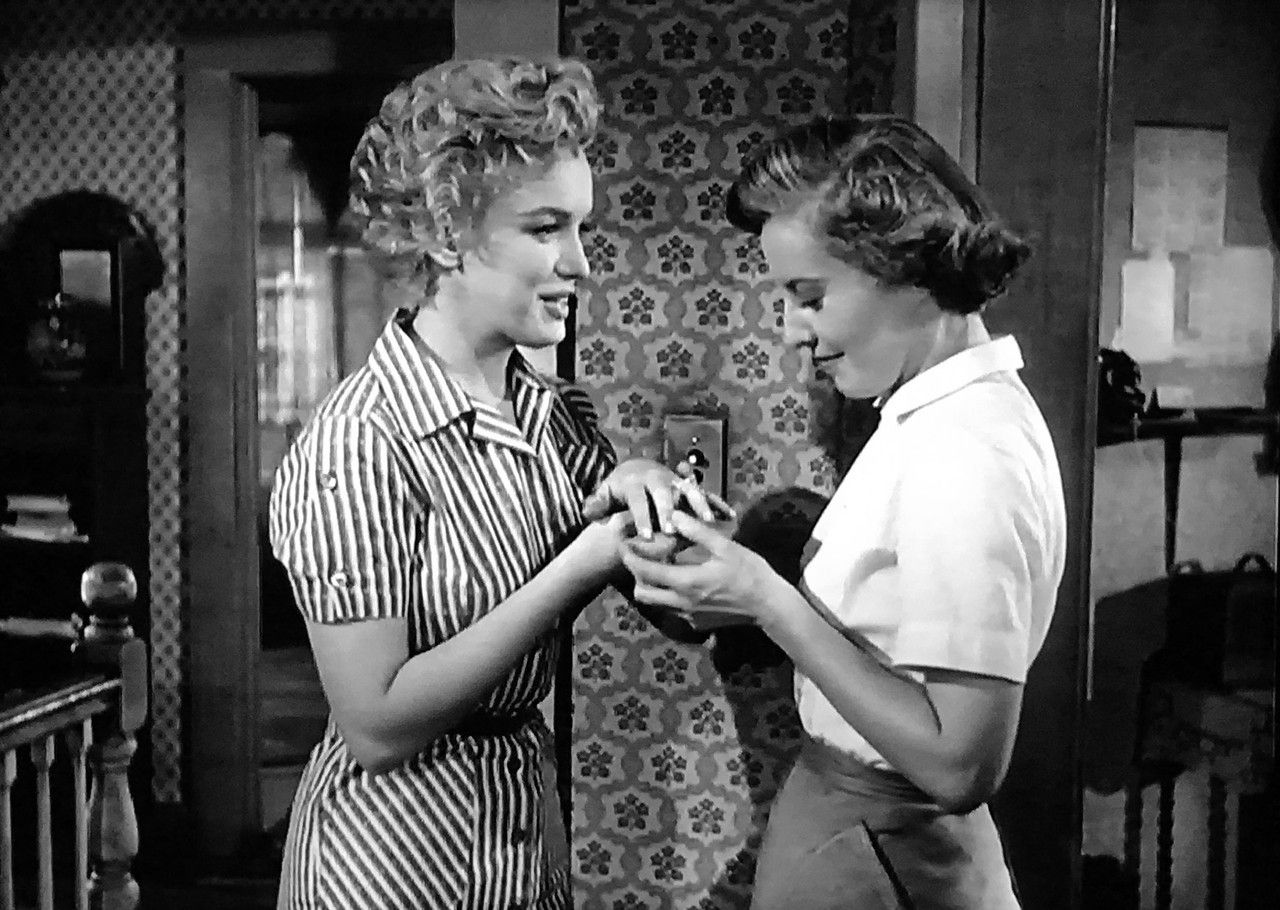
Lang’s vision, one altered somewhat from his earlier films, transformed, to a degree, the social landscape of the play. Lang deemphasized the social issues related to the Depression, concentrated on the personal story of adultery and changed the ending to one he describes as “affirmative.” Lang’s more positive vision may have come from his narrow escape from the Nazis (Hitler was none to fond of his films). In addition, he was well aware that with his Jewish background, he was lucky to be alive. This more positive vision may also show the influence of Bertolt Brecht, with whom Lang worked (though Brecht would have been horrified at the happy ending) for Lang had come to believe that the focus of the drama should be on the struggle of the characters and not on the ending, however it came out. His directorial method, hitherto autocratic, was altered somewhat on this film, as well, and he credits Barbara Stanwyck with nurturing an insecure Marilyn Monroe throughout the film. This resulted in a performance by her which was reviewed positively by the critics. Bosley Crowther of the New York Times praised Lang’s work on Ministry of Fear, but he had reservations about Clash By Night, for he believed “it lacked conviction…(in part because) the writers, Hayes and Odets seemed unable to resolve their drama with a believable conclusion.” Crowther’s remarks squarely places the blame on the shoulders of the writers, though there is clear evidence that Lang himself revised the ending of Odet’s play, and raises the question, yet again, of the notion of authorship in regard to film.
Notes by Barbara Michel
You may also like...
-
News

Frances Blau
Toronto Film Society | February 27, 2024On Monday, February 26th, 2024, Toronto Film Society lost longtime friend, supporter, and board member Frances Blau. Known for her sense of humour, her love of film, her generosity,...
-
Special Events

Monday Evening Film Noir Double Bill at the Paradise Theatre
Toronto Film Society | July 8, 2024The Toronto Film Society presents a film-noir double feature at one low price! The Window (1949) in a double bill with Black Angel (1946) at the Paradise Theatre on Monday, August...
Programming

Virtual Saturday Night at the Movies
Toronto Film Society | July 20, 2024Toronto Film Society is back in the theatre! However, we’re still pleased to continue to bring you films straight to your home! Beginning Season 73 until now we have...
4-
 Toronto Film Society | July 8, 2024
Toronto Film Society | July 8, 2024
Monday Evening Film Noir Double Bill at the Paradise Theatre
-
 Toronto Film Society | November 6, 2022
Toronto Film Society | November 6, 2022
-
 Toronto Film Society | August 1, 2023
Toronto Film Society | August 1, 2023
Donate to Toronto Film Society – We’re now a Registered Charity!
-
Copyright © 2017 Toronto Film Society.

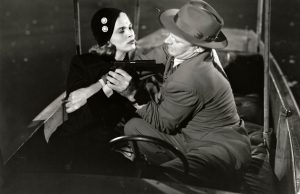

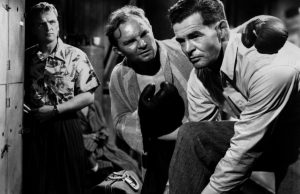
Leave a Reply